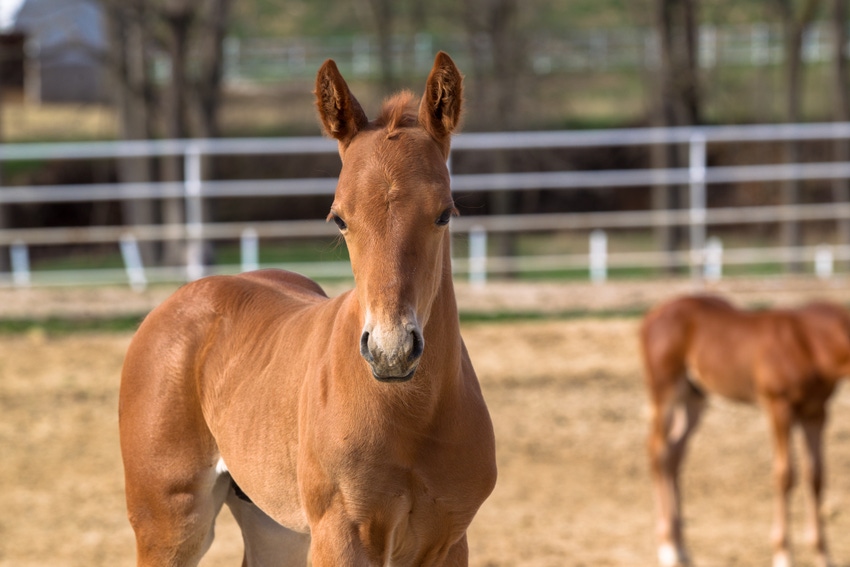Weanling horses require additional support and feeding adjustments as they grow.
August 9, 2017

As summer ends and foals continue to grow and gain independence, it’s time to think about the nutrition requirements of weanling horses. This can be a stressful time both emotionally and nutritionally. Keep the following tips in mind to ensure a smooth transition and continued healthy growth through weaning.
When to wean a foal
“If the weanling horse is one you’ve raised since birth, you have a lot of control over how well prepared your baby is for weaning,” Dr. Anna Pesta, equine nutritionist with Purina Animal Nutrition, said. “Foals will show interest in feeds early on, and by about two months of age, their mother’s milk will no longer supply all the nutrients needed for optimum growth.”
To support smooth, steady growth, Pesta advised that suckling foals should be offered 1 lb. of a properly formulated foal feed per month of age per day. For example, a three-month-old would ideally be eating about 3 lb. of feed per day, in addition to milk and free-choice hay or pasture.
A weanling horse already accustomed to eating an adequate amount of dry feed will transition to postweaning life much more easily and maintain nutrient intake at a level to sustain optimum growth. Knowing how to eat and having a companion to keep them company after weaning helps foals adjust to their new independence.
Best feed for weanling horses
When weaning horses, it’s important to offer weanlings a high-quality feed specifically formulated for foals.
“Young, growing horses have different requirements for protein, vitamins and minerals than adult horses,” Pesta said.
To ensure correct muscle, bone and tendon development, look for feeds with a proper balance of high-quality proteins, amino acids, calories, calcium and phosphorus.
Feeds formulated for adults will not provide the necessary nutrients for weanlings to fulfill their genetic potential and may cause deficiencies and increase the risk of growth abnormalities. Additionally, an economy-type feed with a seemingly adequate amount of crude protein (14-16%) may not supply sources of protein that are easily digestible or provide the correct ratios of amino acids.
Track their progress
Steady, consistent growth throughout weaning and to maturity can influence lifelong soundness. Periodically weigh foals on a scale, or properly use a weight tape, to get an approximate weight, and use a height stick to measure wither and hip height, Pesta said.
“Generally, foals should reach approximately 50% of their mature weight and 80% of their mature height by six months old,” Pesta added.
Plotting a weanling horse’s height and weight over time should show a smooth, steady growth curve, with no obvious peaks or valleys.
“Prior to weaning, the foal is growing at a rapid rate of about 2.0-2.5 lb. per day,” Pesta said. This growth gradually slows after the foal becomes a weanling — to about 1 lb. per day as the animal approaches 12 months of age.
“The ability of the weanling’s digestive system to digest forages also increases postweaning, as does their daily forage intake,” Pesta added. “Therefore, the proportion of the diet as feed may not continue to increase and may actually decrease if forage quality is excellent.”
After choosing a foal feed, provide at least the minimum recommended amount of feed to supply adequate amino acids, vitamins and minerals. Routine evaluation of body fat cover, especially the amount of fat covering the rib area, will help determine when adjustments in feeding rates should be considered.
Weanling horses are growing to their genetic potential when they are being fed a well-balanced diet in amounts to maintain slight cover so ribs aren’t seen but are easily felt.
You May Also Like


.png?width=300&auto=webp&quality=80&disable=upscale)
